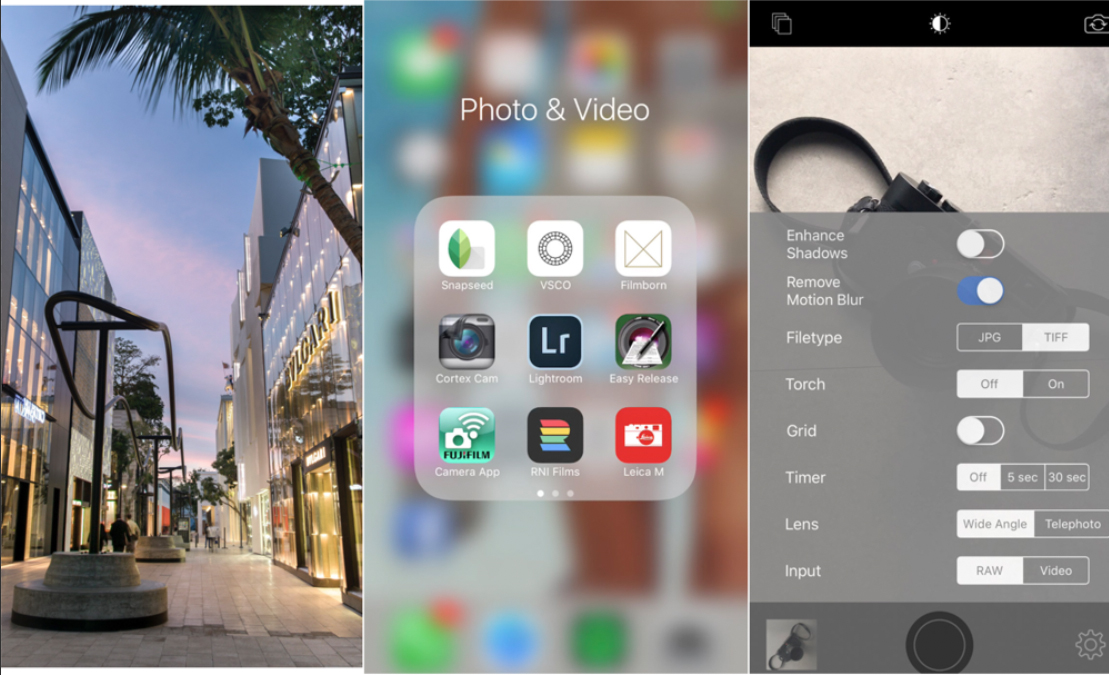Shooting cover images of magazines, billboards, commercials and music videos, the hyperbole that phones are not ‘good enough’ went away with the relevance of Blackberry. For the most part, those who want a dedicated camera system tend to flock to either the mirrorless or DSLR camps, with a few notable outliers like the Fuji X100F and the Sony RX100 V, the former of which doesn’t even offer 4K video. For those who don’t, the smartphone has taken over at ‘the people’s’ point and shoot.

Straight out of the box the average smartphone can create amazing images in the correct lighting condition, but even the best cameras need a little bit of help and gear to get the most of them. You don’t need the huge camera rigs from the “Shot on iPhone” commercials, so here are just a few devices/apps to help elevate your images and video on your mobile device.
[REWIND: HOW TO SHOOT GREAT PHOTOS & VIDEO ON AN IPHONE]
Photography Apps
The one benefit to your phone against a dedicated camera, besides always having it at your side, is the ability to enhance the stock software with downloadable applications. The stock camera app found in iOS and Android devices is decent enough for casual shooting as it’s easy to use and almost always works. There are hundreds of applications that do different things at different price points. Some are exceptional and others are just time wasters with facial recognition.

Just like there are dedicated photo apps for improving the quality of your photography, the same thing is true for video. Available for both iOS and Android, FiLMiC Pro offers a unique set of features not available in most stock video applications. Features such as cinematic 24 frames per second, higher bit rate audio recording with levels, custom aspect ratios, and with some devices recording at 4K at 100 Mbps.
It has been used to make short films, commercials for Bentley, and a music video for Edward Sharpe & The Magnetic Zeros that was direct by Olivia Wilde.
[Rewind: FILMIC PRO TO RELEASE LOG VIDEO PROFILE | LOOKS LIKE THE NEXT GREAT STEP FOR MOBILE VIDEO]

Cortex
Cortex Camera fixes one big flaw with cellphone cameras, low-light noise. While many new phones like the OnePlus 5, have great better low light performance, there is no to avoid raising the ISO when shooting in low light. Cortex allows for stacked exposures (up to 99), creating a larger, more detailed image with less noise. See our review of it at the link below:

Halide gives photographers manual controls to independently change settings like exposure, focus, ISO, white balance, and shutter speed; without overwhelming the user. There is a ton of detail that went into the design including the retro inspired camera manual. Features such as live histogram, support for RAW capture, and focus peaking will appeal to pros and enthusiasts alike.

DJI Osmo Mobile
Shaky footage in a film can distract from the subject and be a downright annoyance when tiring to invest your time into a film. Unless it is intentionally handheld for dramatic effect (still distracting), it is best to lock down your camera or use a stabilizer. The market is quickly becoming flooded with stabilizers and gimbals from overseas, but one of the best remains the DJI Osmo Mobile Gimbal. Having invested huge amounts of R&D into stabilizing their drone cameras, DJI’s Osmo provides 3-axis stabilization, while the SmoothTrack tech works to reduce small movements and shaking.
The stabilization is not just beneficial for videographers, as it provides a steady hand for long exposures and when stacking images with Cortex. For larger phones and auxiliary lenses, Moondog Labs creates a counterweight for the DJI Osmo so the gimbal can function properly.
![]()
Moment Lenses
Devices like the iPhone 7 have two cameras that proved different focal lengths and can be combined to create a shallow depth of field effect, but even so, the standard lens built into a smartphone can be limiting. There is a multitude of lenses for mobile devices. Some clip on, some screw on, and others are integrated into a case, but few are born from cinema glass. Since 2014, Moment has been setting standards on what auxiliary lens show be with high-quality glass and very minimal, in any, vignette. Combined with the Moondog Labs filter mount, Moment lenses can utilize any standard 52mm photographic filter.
Birthdays, graduations, weddings, random Saturday afternoons are all captured with the little magical boxes that reside in our pockets. Smartphones are following in the same footsteps as early 35mm cameras once did, it has allowed the masses to capture moments of everyday life. In the right hands, these devices can create beautiful images and stunning video.











